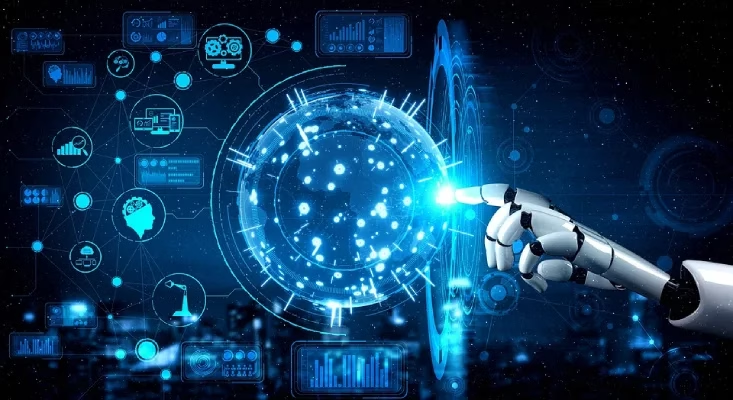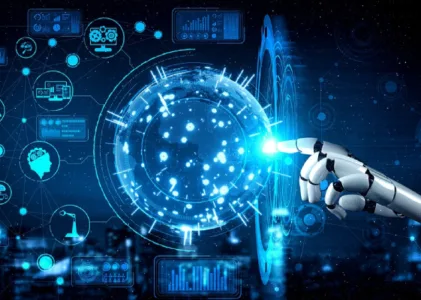Few threads shine so brightly in the tapestry of human progress as robotics. That which was earlier confined to the pages of science fiction now walks out of our imagination into our everyday lives. Robots are no longer cold and calculating machines, fast developing into what will shortly become our mechanical companions, assisting us in ways we could hardly have imagined.
The article opens the fascinating world of robotics and unwraps inside its history, present, and what it promises in the future, keeping at the core our human perspective.
Genesis of Robotics: From Myths to Motors
The idea of robotics is as old as human creativity. For example, from the ancient Greek myths, Hephaestus—the god of blacksmiths—designed mechanical servants able to help him in his forge. In the 15th century, Leonardo da Vinci sketched a design for a mechanical knight that would be able to sit up and move its arms; he even included designs for the movement of its jaw. All of these ideas were not something otherworldly, they corded our deep desires to create life or something at least similar to it.
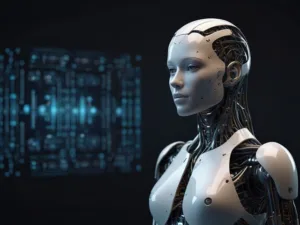
Now it was the 20th century, and the fiction is transformed into reality, which has yet to come to a reality. The term “robot” was first introduced by the Czech playwright Karel Čapek in his 1921 play R.U.R. (Rossum’s Universal Robots), from the Czech word “robota” meaning forced labour. This described a view of what robots were seen as at that time: machines to serve. The pioneers, George Devol and Joseph Engelberger, developed Unimate, the very first industrial robot in the 1960s, which changed the perspective of assembly lines altogether. It wasn’t sentient or humanoid; it was accurate, indefatigable, and safe—qualities that would come to define the first wave of robotics.
This history illustrates that robotics isn’t some evolution of technology but a manifestation of our human desires for creation, an extension of capabilities, and maybe even an understanding of ourselves a little better by copying our form and function.
Today’s Landscape: Robots Among Us
Today, robots are everywhere, often in forms most of us may not always immediately recognize. Your Roomba is vacuuming the living room, the GPS guiding your car, or an algorithm suggesting shows on your Netflix—all are robotic systems. In factories, robots perform tasks with superhuman precision and construct everything from cars to smartphones. In hospitals, robot-assisted surgeries have opened up smaller incisions, reduced blood loss, and hastened recovery times.
One of the most fascinating areas is social robotics. Take Pepper—a humanoid robot developed by SoftBank Robotics. It stands about four feet tall, with expressive eyes and gestures; it is capable of picking up human emotions and acting accordingly. It is used in retail for customer reception, in schools to assist teachers, and even in elderly care units for companionship. While this can’t replace human contact, Pepper could somehow bridge the gap to those perhaps lonely individuals.
This is what has resulted in trending robots in Japan, a land of a greying society, like PARO. With its cute and fluffy seal-pup appearance, PARO is the therapeutic robot of the future. It recognizes and communicates with its owner through its touch and voice while expressing its feelings by moving and making sounds. It has been found to reduce stress and anxiety in institutionalized residents, especially in those suffering from dementia. This is a very pointed example of how robots can provide comfort even as human caregivers need a break.

These examples raise a very pertinent question: the fact that robots are not here to replace us, but complement us. They relieve us of tasks that are either dangerous or repetitive or need superhuman precision and thus allow us to focus on what makes us quintessentially human—creativity, empathy, and complex problem-solving.
AI, Robotics and Machine Learning: The Brain Behind the Brawn
If robots form the body, then Artificial Intelligence and Machine Learning are the brains. AI, a general term, denotes that machines can do things in a manner that would be called “smart.” Machine learning is a subdomain of AI where systems learn from data without being explicitly programmed. Together, they are moving robotics from simple automatons to adaptive and learning entities.
Think about self-driving cars—a robot you’ll probably find in the not-too-distant future that you’ll have to envision trusting your life with. Companies like Tesla and Waymo utilize AI and ML to make these vehicles safer than their human drivers. The car’s sensors are its eyes, always collecting data on road conditions, other vehicles, pedestrians, and more. Machine learning algorithms process this data in real-time, learning from each trip to make better decisions. Should a human driver swerve to avoid a pothole, the AI notices and may consider these actions in a similar scenario.
In agriculture, farming is being disrupted by robots like the See & Spray machine from Blue River Technology. It uses computer vision and machine learning to recognize particular plants, marking them as crops or weeds. With surgical precision, it dunks herbicide only on the weeds, reducing chemical use by up to 90 per cent. This reduces not only farmers’ chemical bills but also makes agriculture greener.

In both, it is learning that bestows this power. While traditional robots follow instructions programmed into them, AI-driven machines learn. They learn from success and failure; from the unexpected challenges hurled at them by the real world. That is what will eventually enable robots to cope with human environments’ complexity and unpredictability.
The Human Touch: Ethics and Emotional Intelligence
The more robots become part of our lives, the more issues related to ethics and emotional intelligence come up. How do we ensure that robots make moral decisions? Can they understand and respect human values? These are not just philosophical questions but of practical concern as robots become involved with greater responsibilities.
Robots are increasingly coming into patient care in healthcare. There is a Japanese bear-shaped robot called Robear that gladly lifts and moves patients, a rather dangerous job in that it leaves many human nurses injured. There is, however, more to this than the mere physical aspect of care; there is also such thing as emotional care. In this line, researchers from the Personal Robots Group at MIT are currently developing robots that will be able to recognize human emotional states. Here, again, the aim is not to allow the robots to feel the emotions but to be appropriately responsive. For instance, the robot might speak more slowly or suggest calming activities if it detects that a patient is anxious.
Autonomous cars have ethical choices programmed into their AI. In such a case where a self-driving car faces an accident, which cannot be avoided, would it ensure people inside the car are safe or minimize the harm, even if those inside are put at risk? So, here’s a modern version of the classic “trolley problem” in ethics, to which no agreement is universal. Car companies are deciding differently, reflecting the tangled technology-human value relationship.
There is also the question of bias. AI systems learn from data, and if that very data reflects biases across humanity, so will the robots. For example, if a hiring robot is trained on past hiring decisions that were biased against women or minorities, it might perpetuate those biases. Companies like IBM and Microsoft are working on “debiasing” techniques, but it’s an ongoing challenge. It reminds us that while we are building these systems, we’re not just coding software, we’re encoding our societal values.
The Future of Robotics: Co-Evolution and Transhumanism
We can peer further ahead and find increased blurring of the line between man and machine. Welcome to the world of transhumanism, where technology is used to amplify and enhance human capabilities. This is not some sort of substitution for body parts but transcending our biological limits.
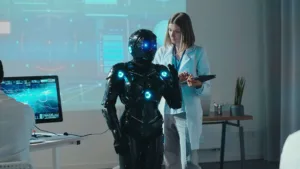
Exoskeletons come into this category. Companies like Ekso Bionics and ReWalk Robotics have created robotic suits that enable paralyzed people to walk again. These are not really robots but wearable ones that respond to the intentions of their wearer. And as the technology improves, exoskeletons may not only restore lost function but enhance it. “Imagine construction workers in suits that give them superhuman strength”, or emergency responders in exoskeletons that protect them from falling debris.
Brain-computer interfaces take this a step further. While Elon Musk’s Neuralink is one of a handful of startups trying to develop direct-brain-communication modalities, their immediate focus is at the medical level: helping those severely paralyzed use their thoughts to control computers or robotic limbs. But the potential does not stop there. You might one day control your smart home, access the internet, or even communicate telepathically just through a neural implant.
Some visionaries view this human-machine merger as the next step in our evolution. Much as we use tools to extend our physical capabilities, they argue, we’ll use robotics and AI to extend our mental capabilities. Ray Kurzweil, Google’s Director of Engineering, has predicted that by 2045, we will increase our intelligence a billion-fold by merging with the intelligent technology we are creating.
These raise profound questions of identity and humanity. If your thoughts go directly to a global network, then what marks the limit between you and the machine? If robotic enhancements give a person superhuman like strength, speed, and intelligence, doesn’t that signal a new form of inequality? These are questions we’ll wrestle with as the borders grow ever more permeable between humans and machines.
Conclusion: Allies in Progress
At its very soul, the story of robotics is a human one: curiosity, drive to create, and the striving to go beyond. From Hephaestus’ mythical servants to the neural implants of tomorrow, robots reflect our changing relationship with technology.
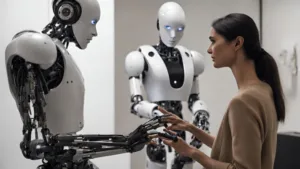
Walk through the factories, hospitals, and homes where robots increasingly collaborate with humans. In doing so, this collaborative relationship deepens the more adaptive and emotionally aware they become. We learn that the future is not about humans versus machines, but about humans and machines working together.
Yet, in a world where robots may be sharing much of their lives with human beings, we are now on the threshold of a new set of challenges: how we could instil them with our values, how we can ensure they enrich our human connections, not replace them, and finally, how many of us preserve what is uniquely human as we begin merging with our mechanical creations?
These questions have no easy answers, and it is precisely for that reason that they are worth exploring. If robotics isn’t just advancing technology, it is also putting up a mirror to ourselves—a call to reflection on values, potential, and what place human beings actually occupy in an increasingly automated world.
And as humans, let us move toward that robotic future with optimism but also accompanied by mindfulness. For robots are not our masters or slaves but our partners—in work, in the search for knowledge, and in the great human quest for the design of tomorrow. Flesh and metal, code and consciousness, together we step into a future where the possibilities are endless, together with our combined capabilities.
To find out more on Robotics Check Out Our Articles on:
Robotics: Our Mechanical Companion
Neuroscience: Your Brain’s Personal Universe Explored
Biotechnology: Harnessing nature’s toolbox
5G and Beyond Revolutionizing Wireless Communication
Quantum Computing: Mysteries of the subatomic world
Frequently Asked Questions About Robotics
1. Are the robots definitely going to take all our jobs?
While robots and AI will definitely automate many jobs, they are more likely to change jobs than completely eliminate them. Most roles will shift toward tasks that require uniquely human skills, such as creativity, empathy, and complex problem-solving. Some design, maintenance, and human collaboration with robots will also create new job categories.
2. Can robots ever possibly understand human emotions?
Current robots can recognize human emotions through such means as facial expressions and tone of voice. However, it is pattern recognition and not actual understanding. While robots, like Pepper, can respond appropriately to perceived emotions, the units themselves do not actually feel emotions. True emotional capacity would require consciousness—a complex philosophical and scientific issue that has yet to be resolved.
3. Is it safe for robots to be in our homes, especially with children?
Modern home robots, whether it be vacuum cleaners or AI assistants, have loads of safety features and go through a lot of testing. As more complex robots start moving into homes, safety will remain paramount. Many are being programmed with “robot ethics” to make sure they make safe decisions. Parents still need to supervise interactions, especially with young children, treating robots the same way they would any new technology.
4. How close are we to having movie-style humanoid robots?
We have come a long way: humanoid robotics; think Boston Dynamics’ Atlas doing complex movements. But most of those demonstrations are tech demos. To make a robot that looks and behaves human-like in day-to-day scenarios, that is a much harder problem. It needs massive developments in materials, power systems, and AI. The sort of robots you see in movies are probably many decades away.
5. Would it be possible for hackers to access one’s mind using brain-computer interfaces, hence invading privacy?
Yes, this is definitely a worry with the advancement of BCIs. Much like how our smartphones can be hacked, a neural implant hooked into the Internet raises the same concerns—if not with even more disastrous results. Companies like Neuralink are focusing on strong encryption and security methods.
There is also the highly complex issue of privacy: a BCI that reads your thoughts could access information you might not want any other living being to know. Data protection frameworks and ethical guidelines will need to be in place as this technology is refined.
References:
1. National Geographic. (2022). “From Hephaestus to Humanoids: The Mythical Origins of Robotics.”
2. ResearchGate. Assistive social robots in elderly care: A review https://www.researchgate.net/publication/229058790_Assistive_social_robots_in_elderly_care_A_review
3. MIT Technology Review. (2023). “AI and Machine Learning: The Cognitive Core of Modern Robotics.”
4. Journal of Medical Ethics. (2022). “Encoding Ethics: Moral Decisions in Autonomous Vehicles.”
5. Science. (2023). “Exoskeletons and BCIs: The Frontiers of Transhumanism.”
6. Harvard Business Review. (2023). “Robots and Employment: Transformation, Not Replacement.”
7. Nature Robotics. (2023). “Safety First: The Evolution of Home Robotics.”
8. Stanford Encyclopedia of Philosophy. (2022). “Machine Ethics and Emotional Intelligence.”

